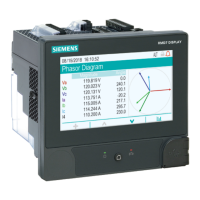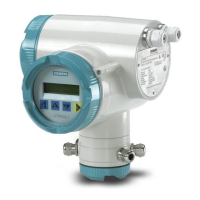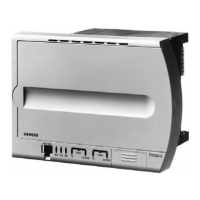Alarms and alerts 9810 series - User manual
177 7EN05-0390-08
Standard alarm
Standard alarms have a detection rate of once every one second.
High-speed alarm
High-speed alarms have a detection rate of once every half-cycle.
3-phase alarms
Alarms on 3-phase systems are evaluated per phase and reported for each phase.
Some alarms, such as the sag/swell alarm, are evaluated per phase, but reported as a single
alarm: Each of the three phases are evaluated for the setpoint condition individually, but there is
only one alarm generated. The alarm pickup occurs when the first phase exceeds the alarm
pickup magnitude for the pickup time delay. The alarm is active as long as any phase remains in
an alarm state. The alarm dropout occurs when the last phase drops below the dropout
magnitude for the dropout time delay.
Over and under setpoint (standard) alarm operation - Example
The meter supports over and under setpoint conditions on standard alarms.
A setpoint condition occurs when the magnitude of the signal being monitored crosses the limit
specified by the pickup setpoint setting and stays within that limit for a minimum time period
specified by the pickup time delay setting.
The setpoint condition ends when the magnitude of the signal being monitored crosses the limit
specified by dropout setpoint setting and stays within that limit for a minimum time period
specified by dropout time delay setting.
Over setpoint
When the value rises above the pickup setpoint setting and remains there long enough to satisfy
the pickup time delay period (ΔT1), the alarm condition is set to ON. When the value falls below
the dropout setpoint setting and remains there long enough to satisfy the dropout time delay
period (ΔT2), the alarm condition is set to OFF.

